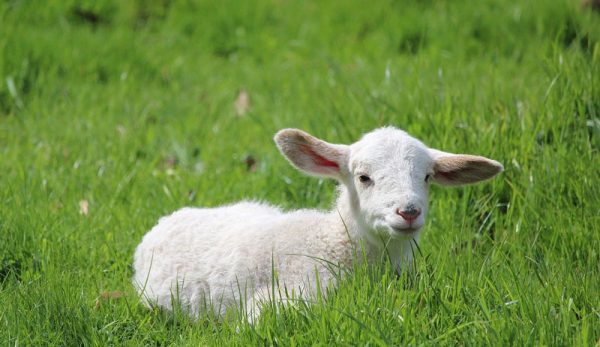
I have been waiting for early April like a kid anticipating Christmas. For me, though, the presents are baby lambs during our first lambing season!
We put our newly purchased ram in a field with nine ewes back in early November of 2020. Ewes, as it turns out, come into heat every 16 to 17 days until they are bred. Gestation for sheep varies slightly among breeds but averages out to about 147 days.
And so, I figured, it was possible the first birth could be Thursday, April 8. This wasn’t too far off. Our first lambs born were twins that made their appearance about noon on April 9!
Book Smart
I prepared as much as I could over the winter by reading about lambing. Also I participated in webinars given by experts who talked about what things to look out for. They covered dealing with problems at birth and what supplies to have on hand.
My kit of needed supplies was purchased and ready to go. I went out to inspect the ewes often, noting that several of them were developing large udders, especially the older ewes that had lambed before.
In fact, maybe I went out a little too many times. Our ewes would just look at me with a patient “What?”
Read more: Here are some tips for getting ewes ready for lambing season.
The Lambing Time Arrives
Finally, about noon on Friday, my husband came into the house and asked me “to come out and help him with something.” As we walked toward the pasture where the ewes were, I noticed a small, light body standing by one of the ewes.
A lamb! At last!
As we got closer, though, I saw another small, slightly moving body lying down next to the ewe. Twins! My husband was also surprised, as he had only seen one when he came into the house.
This second lamb was still very, very wet. It was alive but not moving very much.
In spite of all my great preparations, I didn’t go get my bucket of birthing emergency supplies. Instead, I called my sheep mentor, who lives about two hours away. I told her about this second lamb who was not getting up but was obviously alive and looking around.
She chuckled and said to give it about 30 minutes. Was the ewe paying attention to the newest lamb? she asked. I replied that she was beginning to lick her off a bit, but then would go back to the lively oldest lamb.
She said as long as the new lamb stayed near the ewe, I should just remain patient. We hung up.
The Waiting Game
With rain threatening and sprinkles starting, I sat down on a stump and waited. My husband and son, who came out with me, left with promises to return the minute I needed them.
After 30 minutes I noticed the ewe spending more time with her wet, quiet lamb. She licked the lamb regularly, who struggled to get up. And just as I reached to call my mentor back again after 45 minutes, the newest lamb tried one last time–and stood up!
I pumped my fist in the air! My husband saw that and came over to the pasture. He is as new as I am to lambing, so when he asked, “What is that red ball coming out of the back of the ewe,” I panicked!
Read more: Keep a first-aid kit ready … but it’s better to never need it.
What Is This?
What? It looked ominous to me and I called my mentor back. I had heard of vaginal prolapse after birth. After a quick Google search on my phone right there, I was convinced that is what it was.
(A side note: Don’t rely on Google searches on a small iPhone in the middle of a field during lambing).
My mentor, as usual, was calm. “Well,” she said. “If you are sure it’s a vaginal prolapse, you’ll need to get her into the barn, clean it off and push it back in.” She explained that I would need gloves and lubricant to do that.
And, if it did not stay in, I would need to call our vet.
Well, finally, I had a need for all those supplies. We picked up each of the two lambs and lured the ewe to the barn. I had warm water, towels, gloves and lubricant. I was ready.
I cleaned off the back end of the ewe and pushed the red bag bag inside of her. But wait, there were two bags? And neither of them would stay in as liquid gushed out of the bags.
Identification Is Key
I called my mentor once again (she is infinitely patient) and she said, “Are you sure it’s not afterbirth? It sounds an awful lot like that.”
Oh boy. She was right. I had tried to push the afterbirth back inside the ewe. This is definitely not a good idea. I felt like an idiot!
Honestly, I could have done some real damage. I have read that you should never pull the afterbirth out for fear of tearing and infection.
After checking the ewe’s teats to make sure milk was coming out of both sides, I left the ewe and her new twins alone. I returned a few hours later to find the afterbirth had expelled itself.
Learning from Mistakes
You can never plan for everything, and learning from mistakes is inevitable. I’m just lucky things turned out so well with our first lambing and we have our first two lambs of 2021.
Afterword: Monday, April 12: I went out this morning before finishing this blog to check on my ewes and found two new sets of twins in the barn! All look healthy and happy and I’ll get everyone settled in a stall to bond for a day or two.
I guess the lambing process has begun in earnest.




